Landboxes
Blog

This space contains topics directly related to Landboxes Project and is a collaboration with LAIA Observatory. Some of the aspects pointed in this section are being developed by LAIA Lab with its NY, USA team.
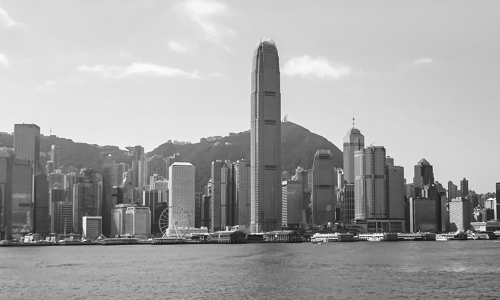
The Hong Kong of Tomorrow
One of the most ambitious and controversial land reclamation projects, “Lantau Tomorrow Vision”, plans to build several man-made islands on the east and north of Lantau and off Tuen Min coast. This would give Hong Kong 1.700 hectares of land, where an estimated 260,000 to 400,000 new homes can be built to accommodate 700,000 to 1.1 million people including infrastructure and transport networks and creating 340,000 jobs over next 20-30 years. It will not only address the city’s housing deficit and land shortage problem, but also will spur social and economic development in one of the most densely populated and least affordable cities in the world.
moreAround the world, finding land is a pressing problem that needs to be tackled urgently, and land reclamation projects have become a feasible way to solve this situation. The time and budget for these projects, however, is inconvenient when using conventional land-reclamation techniques. Landboxes, an eye-catching and ground-breaking system, beats these difficulties and offers the best option to make Lantau Tomorrow Vision a reality.
The problem: A short land supply and housing deficit.
The combination of land shortage and a high population density has made Hong Kong one of the cities with the most expensive housing market. The average price per square foot is nearly 1.246,56 EUR, according to Demographia International Housing Affordability Survey.
On the other hand, climate change has increased the flooding across Hong Kong, and it is expected that sea levels will increase considerably by the end of century. If global warming continues, it will bring major coastal flooding that will displace millions of people.
Despite the pressing need to tackle the housing deficit and the lack of alternatives, the Lantau Tomorrow Vision plan does not seem to generate any excitement as an option. The land reclamation strategy has become a divisive one due to two main concerns.
Firstly, it requires a huge investment, so far it plans to spend HK$624bn (£60bn) plus the over costs that can exceed this budget. This significant government expenditure could be translated to less funding for other social projects and put the country’s finances in trouble.
Second is the environmental impact. The detractors of the project argue that it might cause irreparable damage to surrounding marine life. Experts consider that the project will pose a risk to natural fisheries and disrupt ocean and wind currents.
The solution: Land Reclamation, Landboxes system
Hong Kong has been reclaiming land from the sea for over a century, with approximately 6 percent of Hong Kong’s land being reclaimed. Most has been accomplished through traditional methods such as dredging the seafloor and injecting cement into the seabed, and this houses 27 percent of its population. The Lantau Tomorrow Vision project could be an ideal response to Hong Kong’s current situation. It will recover 1.700 hectares of land that will help to cut real estate prices and make properties affordable.
Undoubtedly, Hong Kong needs to boost its land supply in order to meet the growing demand for housing. It is focusing on the main issue and arguing that the land reclamation option is the most effective way to balance the demand and supply of land. A lot will depend on how this task is carried out when evaluating if it was worth doing.
To face the main concerns about this project, it is important to approach it from different perspectives and, although Hong Kong is an expert in land reclamation projects, it is never too late to think out of the box and walk a different path to reach the same destination, and that is what Landboxes offers.
The Landboxes system allows land reclamation projects to be carried out in a cost effective, fast and environmentally friendly way. A Landboxes unit is built and located in one week, creating one km2 of territory. Besides the time savings, it is between 50% and 20% more economical than alternative methods due to the integration of necessary infrastructures within its system and through the simplification of design and engineering tasks. Likewise, the Landboxes design is complements its surroundings so as not to interrupt the underwater ecological cycle and can endure the impact of sea level rise as a consequence of climate change.
Author: Landboxes Contents Office 2019
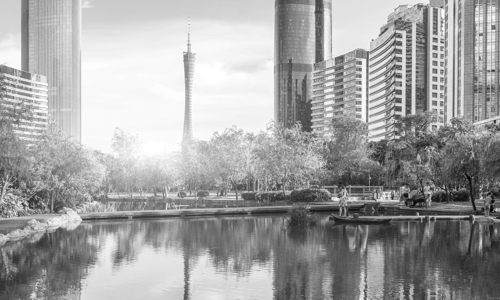
Sponge cities
Extensive urbanization and urban sprawl have led to an increasing demand for roads and other infrastructures to cover transportation needs. All these widespread impermeable areas, however, create impervious surfaces that cannot absorb rainwater and does not allow it to filter through the soil and reach underground aquifers. Because of this, the new urban cores are susceptible to frequent floods because rainwater no longer seeps into the ground.
moreIn these circumstances, water security risks arise. Less water is available in urban and nearby areas, aquifers run out of water reserves; polluted water is discharged into rivers or the sea. In extreme cases, the wastewater treatment plants cannot handle all the water from the drainage systems and rainwater ends up mixed with untreated water causing pollution issues. It can also lead to a decrease, and contamination of, green spaces as the lack of soil to absorb the rainwater affects the vegetation proliferation, and then fewer plants are present to capture harmful CO2 emissions.
In China many cities are dealing with this phenomenon as it has become a serious issue. In 2014, the People’s Republic of China established the concept of the ‘Sponge City’ as a means of referring to how cities must adapt to manage their mainstream urban water through different strategies of planning and design. The main aim of which is to allow the water to be filtered into the ground or to be collected for different purposes.
Examples of these strategies include permeable roads, rooftops garden, rain gardens, rainwater harvesting (for garden and household uses), green spaces, like parks, and blues spaces, like ponds and lakes. All of these helps to absorb the rainwater and naturally filter or collect and store it, so it can be reused it in an ecologically friendly way.
Modern urban centres need to evolve around this matter. The key to a successful urban development is to build resilient cities that are highly adaptable to natures forces. Today’s building and city planning methods often create their own problems, but in the case of Sponge Cities, they are moving back to a more natural outlook, where the environment, and its associated challenges, are used to benefit the urban population.
Sponge Cities: What is it all about?
https://www.power-to-the-people.net/2016/01/sponge-cities-what-is-it-all-about/
Sponge Cities: Emerging Approaches, Challenges and Opportunities
https://www.mdpi.com/journal/water/special_issues/Sponge-Cities
Author: LAIA Observatory 2019
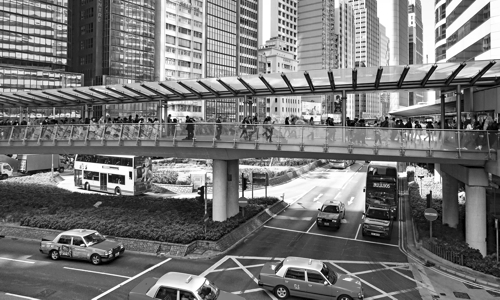
Urban heat island
Have you ever had the feeling that when you leave the city and go to the countryside, the temperature changes? For a moment, look around you, possibly you will see buildings, parking lots, streets with traffic jams, all the elements that exacerbates summer temperatures.
moreAccording to EPA, the USA’s Environmental Protection Agency, the term "heat island" describes built up areas that have higher average temperatures than nearby rural areas. This phenomenon is seen when heat accumulates in cities due to the construction materials used in them. These materials absorb all wavelengths of light energy and converts it into heat throughout the hours of insolation and release it during day and night, preventing temperatures from falling. The annual mean air temperature of a city with 1 million people or more can be 1.8–5.4°F (1–3°C) warmer than its surroundings. In the evening, the difference can be as high as 22°F (12°C).
Urban infrastructure has replaced open land and vegetation, making surfaces that once were permeable and moist became impermeable and dry. Water cannot flow and penetrate through surfaces like asphalt or concrete to cool them down. As a result, urban areas are warmer than their rural surroundings, and this unintentional, local, climate alteration changes the characteristics of the surface and the atmosphere itself.
In summertime, the frequency and intensity of heatwaves increases, making cities become heat traps. For example, New York City is about 7°F (4°C) hotter than its surrounding areas, and this creates a cycle that does not end. It results in a growing energy demand to run fans and air conditioners, and this can lead to power shortages and blackouts. Air conditioning pumps waste heat into the air, which adds to the heat and gas emissions generated by traffic. The city’s surfaces absorb this heat as well as radiation from the sun’s rays, and these higher temperatures make people prone to dehydration and more likely to suffer from heat exhaustion.
To mitigate the urban heat island effect, cities around the world are using vegetation to cool down, such as green roofs and walls, and selective planting of trees; using building materials with higher reflectivity and emissivity to avoid the storing heat and radiating it back into the atmosphere and small water installations, such as fountains, pools and ponds, that serves as heat buffers helping to create microclimates.
However, these measures do not solve the problem itself. To combat the heat island effect, it is necessary to rethink urban design, not only in terms of materials but also in terms of organization and distribution. Green spaces should be the skin that covers cities with efficient and sustainable energy sources, minimal consumption and zero polluting transportation options all working to minimise emissions and other negative effects of urban living.
Learn About Heat Islands
https://www.epa.gov/heat-islands/learn-about-heat-islands
Author: LAIA Observatory 2019
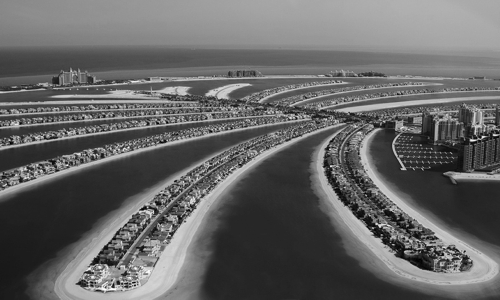
Great examples of land reclamation
The artificial islands of Dubai or Kansai Airport in Japan are two very different examples of land reclamation developments. During the 21st century it is estimated that works of this type will be carried out throughout the world, with an area recovered to the sea of more than 3,000 km2. We are, therefore, faced with a gigantic opportunity to develop new techniques and processes that achieve better performance than dredging in terms of economy, ecological impact and social problems.
morePalm Jumeriah, Dubai
The Palm Jumeirah is an artificial island in the United Arab Emirates. Beginning construction in 2001, the Palm Jumeirah now measures between four and five kilometres and has created 560 hectares of land and added almost 7 kilometres to the country’s coastline.
In contrast to other man-made island, Dubai’s Palm Islands are made from natural materials; rock and sand. This land reclamation project needed colossal amounts of sand, which was dredged from extensive areas of seabed. This needed to be dumped when the sea was calm to ensure stability and help to the sand settle so avoiding any slippage and future sinking. To hasten the settling, the sand underwent a process called vibro-compaction.
Kansai Airport, Japan
In 1987, at around five kilometres (3 miles) from the coastal area and a sea depth of more than 20 meters (65 feet), tons of sand were laid on top of the clay seabed of Osaka bay. This was followed by 2.2 million vertical pipes that were pounded into the clay and filled with sand drains, and these were intended to speed up the ground settlement. To give space to the Kansai Airport, a new soil layer, dredged from Osaka Bay and quarried from nearby mountains, with some even barged in from China and Korea, was created and protected by a seawall of 48.000 tetrapods, which were made of concrete blocks and rubble.
Since its opened in 1994, Kansai has sunk 38 feet. It was expected that settling would stabilize at 13 feet above sea level, during a period of 50 years. This was considered the minimum elevation required to prevent flooding in case a breach develops in an encircling seawall, but the settling process continues today at a faster rate than expected.
New York Bay, USA - Landboxes System
Traditional land reclamation mechanisms are based on fighting the water to create new land. Reclaimed land is like a wet sponge that must be transformed into a dry and dense foundation before it can support any weight. Even then, however, it is in persistent risk of being defeat by mother nature and sinking or suffering from excessive erosion.
It is time to take the next step in land reclamation, where natural forces are integrated to our way of life and used in our favour. To achieve this transformation, Landboxes offer a revolutionary system that allows cities to expand beyond their boundaries in a natural and creative way.
References:
Construction of the Island
https://sites.google.com/site/palmislandsimpact/general-information/construction-of-the-islands
Video. Palm Jumeriah
https://www.youtube.com/watch?v=uOAmNEmMPZ8
The Airport is Sinking
https://www.airspacemag.com/flight-today/how-to-save-a-sinking-airport-180968985/
Video. Kansai Airport
https://www.youtube.com/watch?v=zMcnqO3nPIc
Author: Landboxes Contents Office 2018

The world in times of warming
During the 20th century, the Earth’s average temperature has increased around 2oC, and many of us may wonder what all the fuss is about? This temperature rise can only mean that winters and falls will be less cold and summers and springs hotter, right? At the end, two degrees does not sound like a real inconvenience. Unfortunately, it is not that simple.
moreThe United Nations Intergovernmental Panel on Climate Change established the global average temperature has climbed 0.85C, from 0.65C to 1.06C during the period from 1880 to 2012. Small changes in temperature translate to huge changes in the environment. Now, the Earth is facing a rise of 2 to 3 degrees over the next 50 to 100 years.
In a world 3C warmer the loss of sea ice accelerated sea level rise and longer and more intense heat waves are no longer abstract challenges. All these phenomena will mean a significant drop in food production due to extensive droughts and flooding; also, extreme weather conditions will change the environment harming animal and plant life, increasing social and economic instability and shortages in water supply. All these will redraw the world as we know it.
One of the biggest risks is the sea level rising, a number of cities around the world are under this threat. The non-profit organisation Climate Central estimates that 275 million people worldwide live in metropolitan areas that will be eventually flooded when global temperature rise by 3oC. Osaka, Rio de Janiero, Shanghai, New York City, Los Angeles, San Francisco Bay Area, and Miami amongst others are in high risk to change their landscape dramatically.
Despite efforts to limit global warming to 2oC, the global temperatures continue to rise due to the high concentration of greenhouse gases emissions in the atmosphere. A new world era is approaching. No matter what we do, the damage is already done, and we are dealing with the consequences. The harshness of the weather conditions is making the cost of protecting cities from flooding and repairing damages increase every year. In the future, the investment to relocate the communities affected by flooding will be astronomic.
Today, it looks like this will happen far in the future, but there is a deadline set and that day will come. From today, it is necessary to put in action the solutions that will deal with this situation. It is essential to think outside the box and create new infrastructures that adapt to these adverse conditions and allow us to re-accommodate people in zones vulnerable to sea level rise. If we start now, we can avoid massive migrations in the years to come.
Author: LAIA Observatory 2018
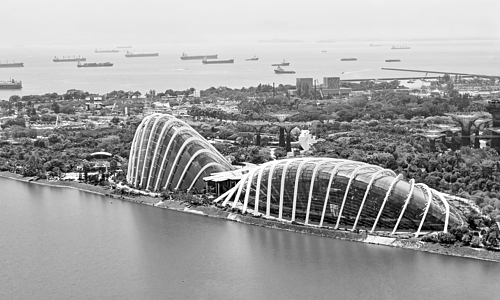
About Land reclamation
For generations, mankind has had the need to create new land, and eventually began reclaiming it from nearby water sources. Draining sea lands has been able to support agricultural and industrial activities and, more recently, to address the need for new housing. Land reclamation techniques begin with infilling, the filling up a shallow underwater area with rocks, cement, clay, and dirt, then the dredging and draining off the water, and after that a deep cement mixing may be used to contain the area.
moreThe actions of sea reclamation have brought significant benefits to several countries, especially in the Asia region. Japan has reclaimed about 96 square miles from Tokyo Bay, which is now home to its largest industrial park. From this new land, it built up the Odaiba island. In addition, five other artificial reclaimed islands were built up and fortified. In Kobe, the Japanese have also reclaimed about 8.9 square miles.
In China many cities are dealing with this phenomenon as it has become a serious issue. In 2014, the People’s Republic of China established the concept of the ‘Sponge City’ as a means of referring to how cities must adapt to manage their mainstream urban water through different strategies of planning and design. The main aim of which is to allow the water to be filtered into the ground or to be collected for different purposes.
South Korea so far has reclaimed 600 square miles from its coastal wetland, and 2.3166 square miles more were reclaimed from Incheon's waterfront to place the Songdo International Business District on the northwest side of South Korea, an innovative smart city that features schools, hospitals, apartments, offices buildings and other facilities that will be completed by 2020. Likewise, Singapore had the highest level of sea reclamation. New reclaimed land for fish farming holds a key role in China, Vietnam, and Indonesia, while new reclaimed land for construction and docks dominated in Malaysia, Singapore, and Brunei.
In Europe, the Netherlands, one of the most densely populated countries in the world, has reclaimed 2.700 square miles from what were once seas, marshes, lakes, and swamps. So far, the country with the most reclaimed land is China, with around 4.600 square miles added to date. About 65 percent of the tidal flats around the Yellow Sea have been reclaimed and the Yangzi lowlands and many parts of Shanghai and Wuhan have also had their areas expanded through reclaimed lands. In the Special Administrative Region (SAR) of Macau, most of its land area has been sourced from that reclaimed from the sea. In another Chinese SAR, Hong Kong, the Hong Kong International Airport was constructed upon reclaimed land.
Despite the benefits attached to land reclamation projects, the traditional practices have important drawbacks. Land reclamation is a major geotechnical activity that is very challenging, and which requires many considerations. From a technical point of view, the “new land” regained from the sea is in danger of facing numerous problems, such as liquefaction, flooding and sinking back under water. The environmental impact that land reclamation represents is also a major drawback. Aquatic habitats are destroyed, and water can be polluted leaving marine life without a source of food and shelter, forcing it to emigrate to other places affecting the balance of the sea environment. Nevertheless, it is still under-recognized as threat to the marine ecosystem.
Growing populations and other demographics and environmental factors are increasing the shortage of urban land in cities all over the world. Creating space for important urban epicentres has become more a necessity than a luxury, but it is time to find new ways to tackle this problem. Perhaps, the key is not fighting the water but embrace it. Life on the sea is not a novelty, through history man has been accepting the challenge of living on the water, though without significant success. Now, however, technological advances are creating reliable and sustainable food and energy sources helping us to come closer to conquering this challenge.
Author: LAIA Observatory 2018